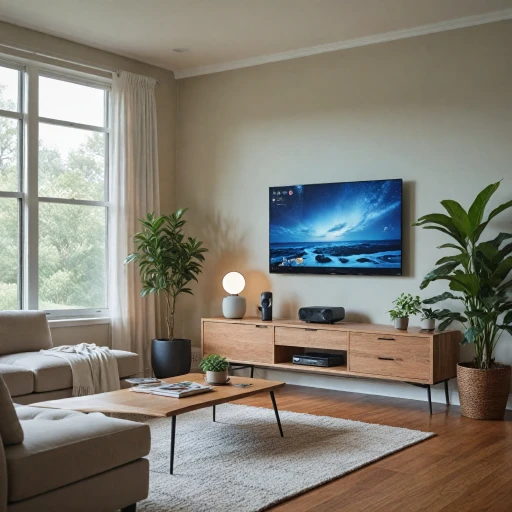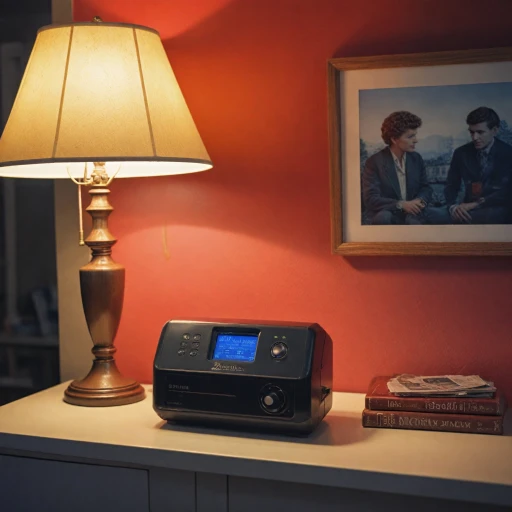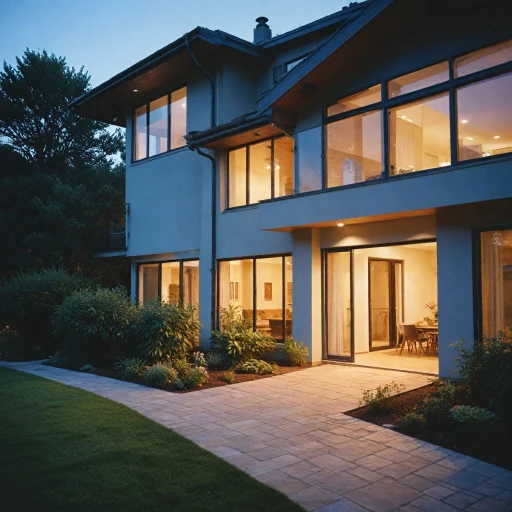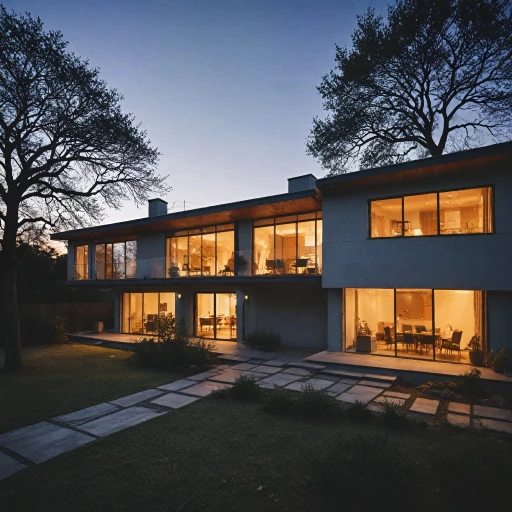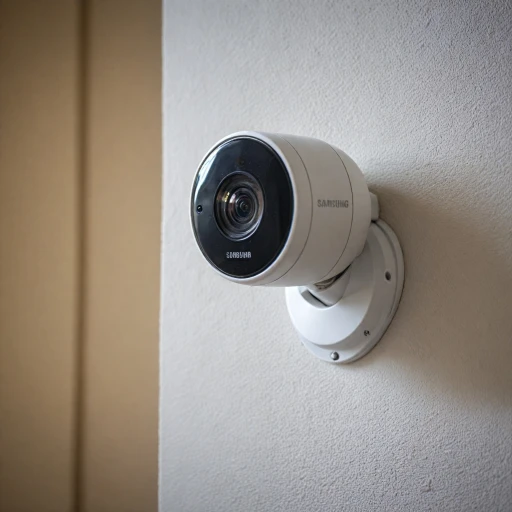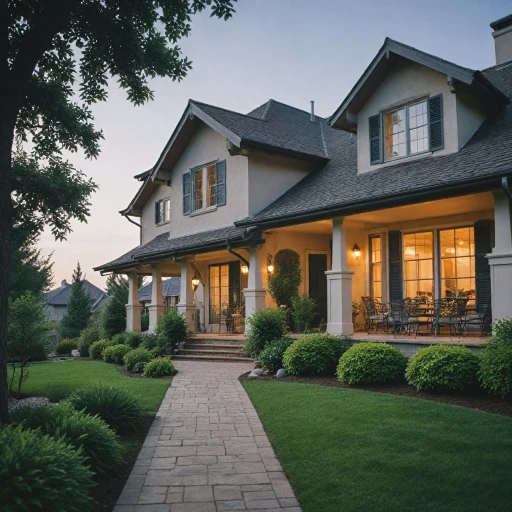
Understanding Motion-Activated Security Cameras
{"Understanding the Basics of Motion-Activated Cameras
Motion-activated security cameras have become an essential component in contemporary home security setups, combining advanced technology with the convenience of automation. These cameras utilize motion sensors to detect unusual activity, ensuring continuous surveillance without constant manual operation.
The core technology behind these devices is the motion sensor, which is designed to trigger the camera when physical movement is detected. This feature effectively reduces unnecessary recordings, saving both video storage space and power, making it an ideal choice for battery-powered setups.
Modern motion-activated cameras come equipped with various functionalities to enhance performance. These include PIR (passive infrared) motion detectors, which provide an efficient means of detecting body heat variations within the camera’s field of view. This ensures that the camera is effectively activated only by significant temperature changes, minimizing false alarms and enhancing the overall security system.
Many motion-activated camera models offer high-definition video capture, ensuring clear footage even in varying lighting conditions. Some advanced cameras come with night vision capabilities, utilizing infrared LEDs to maintain visibility in total darkness. For users seeking color night vision, specific models incorporate additional lighting, such as floodlights, to provide full-color video even at night.
Additionally, some smart motion cameras are compatible with home automation systems like Alexa and Google Assistant. This compatibility allows for seamless integration into broader smart home setups, providing users with voice-activated control and real-time notifications. Users can also benefit from various storage options, including local storage on memory cards and cloud storage solutions, catering to different preferences and price points.
For a more detailed look at enhancing your home security with advanced motion detection features, visit our in-depth guide on dusk to dawn light sensors.
Key Features to Look for in Motion-Activated Cameras
Essential Attributes to Consider in Motion-Activated Security Cameras
When searching for effective motion-activated security cameras, there are specific key attributes to keep in mind. These features ensure that you get the best value for your investment while boosting the security of your home.- Motion Detection and Sensitivity: One of the primary features to look for is a consistent motion detection capability. Motion detectors should provide precise sensing to reduce false alarms. Look for cameras equipped with PIR motion sensors that offer accurate detection by distinguishing between human movement and other sources of motion like pets or foliage.
- Night Vision Quality: A camera's night vision capabilities are crucial for capturing clear video footage after dark. The best models come with color night vision, allowing you to see more detail compared to traditional monochrome night vision.
- Battery and Power Options: Some cameras are battery-powered, giving you the flexibility to install them in places without electrical outlets. If going for convenience, choose battery-powered options that offer long-lasting performance.
- Field of View and Resolution: A wide field view and high-resolution video are essential for comprehensive surveillance. This ensures a broader coverage area and clearer footage, which can be vital if you need to identify faces or other details.
- Smart Home Integration: Look for cameras that can integrate seamlessly with smart home systems like Alexa or Google Home. This can enhance the convenience and security of managing your home environment.
- Local Storage and Cloud Options: Evaluate the security camera's storage options. Some provide local storage capabilities, while others offer cloud-based solutions that may come with subscription fees. Assess what fits best based on your budget and privacy concerns.
- Weather Resistance for Outdoor Use: If the camera will be used outdoors, ensure it is weather-resistant to withstand elements such as rain, wind, and extreme temperatures.
Benefits of Using Motion-Activated Cameras for Home Security
Unlock the Advantages of Motion-Activated Security Cameras
Installing motion-activated security cameras at your residence offers numerous advantages, transforming how you oversee home security with enhanced precision and efficiency. Here's why incorporating these cameras into your security system is a smart move:- Proactive Threat Detection: Motion sensors effectively detect movement, triggering the camera to record and notify you in real-time. This proactive approach offers an added layer of security, allowing you to respond swiftly to potential threats.
- Efficient Resource Use: By activating recording only when motion is detected, motion-activated cameras conserve both storage and battery power. This efficiency ensures prolonged functionality and more focused recording, capturing relevant footage while minimizing the regular price expenditure on storage solutions.
- Minimized False Alarms: Advanced models equipped with AI capabilities can differentiate between pets, vehicles, and human intruders. This reduces false alarms and unnecessary alerts, providing greater peace of mind without frequent disruptions.
- Expanded Field of View: Many of these systems offer a wide field view, ensuring comprehensive coverage of outdoor premises. When combined with technologies like night vision, they deliver high-quality video around the clock, including in low-light conditions.
- Integration with Smart Technologies: Many motion-activated security cameras are compatible with smart home systems such as Alexa and Google Assistant. These integrations enable seamless voice control and create a cohesive home security ecosystem, enhancing the overall user experience.
- Flexible Installation Options: Whether wired or battery powered, these cameras cater to diverse installation preferences and structural requirements. The battery option, in particular, facilitates easy placement without the hassle of extensive wiring, ensuring both flexibility and convenience.
Installation Tips for Optimal Performance
Positioning for Optimal Detection
Proper installation of motion-activated security cameras is crucial for maximizing their efficiency. The goal is to cover key entry points and vulnerable areas around your home. For outdoor settings, ensure the camera's field of view encompasses potential points of access such as the front door, back door, and any ground-level windows.Height and Angle Adjustments
When mounting your security cameras, consider the height and angle carefully. Installing at a height of 8 to 10 feet, where cameras are out of easy reach yet capable of capturing clear motion detection, is usually ideal. The camera should be tilted downward slightly, ensuring the motion sensor effectively covers the desired area without missing critical zones.Ensuring Adequate Lighting Conditions
Whether your motion sensor cameras are inside or outside, lighting plays a pivotal role in capturing clear footage. Ensure areas covered by your cameras are well-lit, especially at night. Using light fixtures equipped with motion detectors can complement your camera's night vision capabilities, helping to reduce false alarms and improve video quality.Connectivity and Power Management
Another crucial aspect is connectivity. Make sure your cameras can reliably connect to your home's network. For battery-powered cameras, maintaining a regular charging schedule or placing them near accessible power sources for easy battery replacements and recharges is essential. If your camera uses a wired connection, ensure the integration does not compromise aesthetics or convenience.Consider Local Storage Options
Consider the storage possibilities for recording the footage your motion-activated cameras capture. Options include local storage solutions like SD cards for quick access or cloud storage for broader remote accessibility. Weigh these choices considering the regular price and available features of different systems, ensuring alignment with your security needs and budget. Careful installation is integral to getting the best out of your motion-activated security cameras. Each step can help optimize the efficacy of the motion detection to provide robust home security.Common Challenges and How to Overcome Them
Addressing Potential Hurdles with Motion-Activated Security Cameras
Using motion-activated security cameras can significantly enhance home safety, but challenges can arise. Here's how to tackle them effectively:- False Alarms: Motion sensors can sometimes trigger false alarms due to environmental factors like moving trees or small animals. To mitigate this, consider adjusting the motion sensitivity and select cameras with advanced motion detection algorithms. Cameras with PIR motion sensors can be more reliable, as they detect body heat rather than simply movement.
- Limited Field of View: It’s crucial to position your camera properly to maximize its field of view and ensure full coverage of your desired area. Opting for models with wide-angle lenses or pan-and-tilt capabilities can also offer broader surveillance coverage.
- Insufficient Battery Life: Battery-powered cameras require efficient energy management. Look for devices with longer battery life or choose features like solar panel compatibility. Regularly check battery levels and consider models that offer battery operation in combination with a wired power option.
- Connectivity Issues: Wireless systems rely on a stable internet connection. Ensure that your Wi-Fi signal is strong enough by situating the cameras close to your router, or use Wi-Fi extenders if necessary. Cameras with local storage can continue to record even if the connection drops temporarily.
- Night Vision Limitations: Low visibility at night can hamper security efforts. Choose cameras with color night vision or infrared LEDs for clear video quality in the dark. Adjustable IR sensitivity can help avoid issues with overexposure.
Integrating Motion-Activated Cameras with Smart Home Systems
Seamless Integration with Smart Home Ecosystems
When looking to integrate motion-activated cameras with your smart home system, it’s crucial to ensure compatibility with your existing devices and networks, such as those from Amazon Alexa or Google Assistant. A properly integrated system allows for a more coherent security setup, adding convenience and reliability.
Here are some tips to help you integrate effectively:
- Compatibility: Before purchasing a motion sensor camera, check its compatibility with your smart home platforms. Most modern cameras support integration with popular systems and offer helpful features such as voice-controlled commands.
- Centralized Management: Leverage apps or dashboards provided by the camera manufacturer or third-party applications to manage all your devices from a single place. This approach ensures that your security cameras, alongside other smart devices, are easy to monitor and control.
- Scenario Automation: Set up smart routines that involve your cameras. For instance, link motion detection to automatically trigger lighting or send a video alert to your smartphone. Such automations enhance security by providing real-time responses to potential threats.
- Ensure Reliable Connectivity: A stable Wi-Fi connection is essential for seamless operation. Consider keeping the routers updated and placed within range to maintain continuous communication between devices. Wi-Fi extenders can be beneficial for improving connectivity, particularly for outdoor or battery-powered cameras.
- Enhanced Features: Utilize features like color night vision or field view adjustments through your smart home interface. This maximizes the potential of your security setup and keeps you informed with high-quality video.
- Local Storage and Cloud Services: Evaluate your camera's storage solutions. Some systems might benefit from a mix of local storage and cloud options, offering secure access to recorded footage when needed.
Investing in the best motion sensor cameras compatible with your existing smart systems can elevate your home's security. Ensure you prioritize key features and plan for practical integrations to create a unified and efficient surveillance network.



